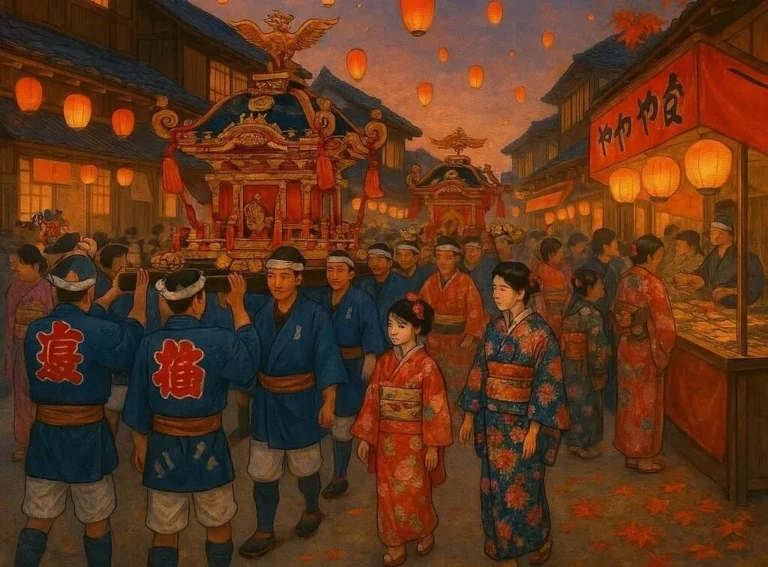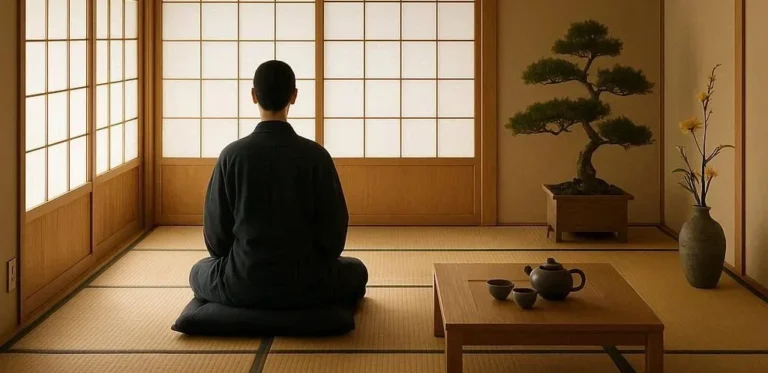510 views Cherry Blossoms and Renewal: Japan’s Symbol of Life and Letting Go
A Season of Beauty, Reflection, and Growth
The sight of delicate pink and white petals drifting across city streets is more than a visual feast—it’s a living poem that has resonated with Japanese people for millennia. In Japan, the blooming of sakura (cherry blossoms) signals a cascade of cultural, spiritual, and practical changes. The season dictates festivals, new school years, corporate rituals, and even the timing of agricultural work. For travelers, it’s an invitation to witness a well‑told story of renewal, impermanence, and the art of letting go.
An Ancient Tapestry: How Sakura Became National
The journey of cherry blossoms from humble trees to national emblem began in the 9th century during the Heian period. Court poets, inspired by the fleeting glory of sakura, began to write waka and haiku celebrating the blossoms’ transience. By the Edo era, mono no aware—the pathos of fleeting beauty—had become a centerpiece of artistic philosophy. The imperial decree of 1878 officially recognized sakura as Japan’s national flower, cementing its role in cultural identity. Today, over 200,000 km of roads, parks, and gardens across the islands stretch thin with blossoming branches.
The Core of Renewal: A Symbol of Fresh Beginnings
Culturally, sakura is a mirror of renewal. Every January, new blossoms unfold the following spring, a literal rebirth of nature. This cyclical pattern inspires schools to open, businesses to launch new projects, and families to celebrate kinenkai (memorial parties). Religious temples stage sakura matsuri—cherry blossom festivals—at each freshly blooming grove, paralleling a new spiritual calendar. In this way, the sakura represents not just fleeting beauty but a profound, recurring promise of fresh starts.
Letting Go: The Impermanence Embedded in Petals
Japanese philosophy, steeped in Zen and Shinto beliefs, reveres impermanence—mujō—as the cornerstone of existence. When cherry blossoms bloom, they shimmer magnificently but only for a few weeks before they fall; the fall isn’t littering the world but fertilizing the soil for the next cycle. This natural lesson reminds us that letting go isn’t loss; it is part of a regenerative process. In daily life, the sakura invites individuals to release attachments, cherish moments, and allow space for personal growth.
Hanami: The Art of Spectating Life’s Brevity
Japanese tradition calls the pleasure of admiring cherry blossoms hanami. Families, coworkers, and friends gather under the canopy for picnics, karaoke, and art, celebrating the collective human experience. Parks like Ueno, Maruyama, and Shinjuku Gyoen become living galleries where resonance between nature and society can be felt. The essence of hanami is not just to indulge in beauty but to embrace mono no aware—a gentle awareness that everything is transitory.
Seasonal Tides: Sakura in Identity, Economics, and Ecology
The first of every spring, the media forecasts the sakura calendar: which cities will bloom earliest, the prime viewing spots, and temperature forecasts. This information fuels tourism, local economies, and fashion cycles. Cherry blossom parades, mobule walks, lantern festivals, and regional food specials light up the country. Yet, Sakura’s influence transcends economics, shaping rural communities, city aesthetics, and even corporate branding. In this sense, the flower is both a visual icon and an economic engine.
Spiritual Practices Around the Blowing Petals
Shinto shrines use sakura for purification rituals. During Yomikiri, rituals with sakura branches symbolize purging negative energy. Buddhist monks observe kissings of handmade paper ofuda in delicate sakura swirls to release emotional burdens. Meditation centers incorporate sakura images and sakafuda (flower‑paper) into the meditation practice, easing practitioners into mindful acceptance of life’s flux.
Global Interest: How Tourists Witness Japan’s Floral Rebirth
Every year, millions of foreigners flock to Japan for the blooming season. Wanderers often plan to see the Mie’s Sumeragi or the Saitama Willow Park, known for their breathtaking indoor bloomeries. Japanese tourism agencies partner with local host communities to limit over‑crowding through skip‑ticket systems and “day‑pass” specials. Digital calendars and smartphone apps, such as “Sakura Forecast,” help travelers align their itineraries with peak viewing dates.
Sakura Across Japanese Art and Literature
From classical ukiyo‑e prints depicting endless sakura scenes in Kyoto’s lanes to modern manga referencing the blushing petals, cherry blossoms appear frequently in Japanese creative expressions. Classic poets like Bashō wrote, “The old pond—no poem.” And in Mario Kunishi’s Kaze no Yume, the sakura becomes a motif for narrative arcs of love and loss. These creative works weave the flower’s symbolism into the cultural weft, showing how deeply the sakura is embedded in the psyche.
Environmental and Ecological Perspective
Ecologically, Sakura trees aid soil stabilization and provide nitrogen-rich organic matter that sustains forest ecosystems. Still, over‑cultivation and climate variability threaten some local strains. Conscientious urban planners now focus on kōen (public gardens) that balance beautiful views with biodiversity, offering native wildflowers that coexist with cherry trees. These green spaces nurture urban wildlife, water conservation, and a resilient ecological balance.
How to Plan a Jour‑nery During Sakura Season
1. Check the bloom forecast – use reputable sites or apps for accurate dates.
2. Choose the distance – decide whether you want a crowded cherry blossom festival or a quiet grove.
3. Book accommodations early – peak season often fills up faster than the Tokyo Tower.
4. Travel by public transit – utilize the Sakura Line special train services.
5. Adopt local etiquette – snap a photo, respect no‑tipping rules, and compost used wrappers.
Infusing the Sakura Spirit Into Daily Life
- Morning meditation – spend five minutes visualizing the gentle fall of petals.
- Journal prompts — write about something you’re ready to let go.
- Seasonal habits — adopt short‑lived projects—like a 30‑day gratitude challenge.
- Mindful eating — enjoy a seasonal sakura‑infused matcha or a plum‑scented latte to spark appreciation for fleeting flavors.
Conclusion: Embracing the Wisdom of Sakura
Cherry blossoms serve as a living reminder that life is a series of beginnings and endings, each a chance for renewal. By observing the patterns of sakura, we learn to balance our enthusiasm for new experiences with the acceptance that everything has a cycle. Letting go becomes an act of faith; and through the annual bloom, we are invited to honor the present, celebrate the past, and anticipate what comes next.






